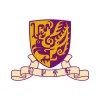Brain Training System Using Electroencephalography (EEG) for Neurorehabilitation of Hand Function After Stroke
Stroke

About this trial
This is an interventional treatment trial for Stroke
Eligibility Criteria
Inclusion Criteria:
(1) sufficient cognition to follow simple instructions, as well as understand the content and purpose of the experiment (Mini-Mental State Examination (MMSE) score>25) ; (2) subcortical location of the ischemic lesion within the territory of the middle cerebral artery; (3) have moderate to severe motor disability at the paretic upper limb (assessed by Fugl-Meyer Assessment (FMA), Modified Ashworth Score of fingers (MAS), and Action Research Arm Test (ARAT))
Exclusion Criteria:
(1) severe hand spasticity, open hand wound or hand deformity; (2) visual field deficits; (3) aphasia, neglect, and apraxia.
Sites / Locations
- Division of Biomedical Engineering, Dept Electronic EngineeringRecruiting
Arms of the Study
Arm 1
Arm 2
Arm 3
Experimental
Experimental
Sham Comparator
fBCI-robot
gBCI-robot
sham-BCI
focalized BCI-robot hand training
generalized BCI-robot hand training
Sham BCI
Outcomes
Primary Outcome Measures
Secondary Outcome Measures
Full Information
1. Study Identification
2. Study Status
3. Sponsor/Collaborators
4. Oversight
5. Study Description
6. Conditions and Keywords
7. Study Design
8. Arms, Groups, and Interventions
10. Eligibility
12. IPD Sharing Statement
Learn more about this trial
